21. Apr 2022 - DOI 10.25626/0136
Nevena Daković is Professor of Film and Media Studies at the Faculty of Dramatic Arts (Belgrade) and Director of the Institute of Theater, Film , Radio and Television. She is the author and/or editor of more than fifteen books, publishes widely in national and international frameworks and has been guest lecturer at European and American Universities. She is a member of Academia Europaea and her main research area are Balkan Cinema, Holocaust Studies, Memory Studies, Screen and Digital Media and Soft power.
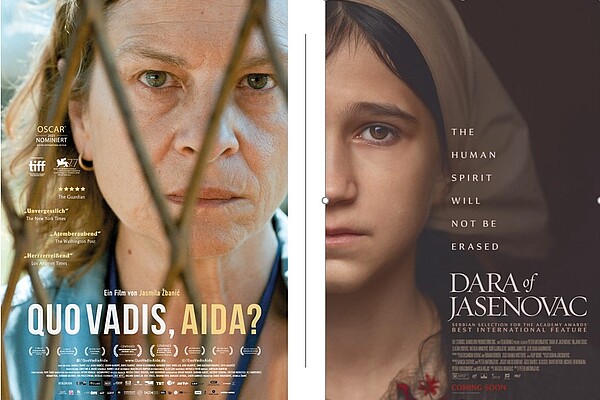
The two films that highlighted Balkan production in 2020 were Dara of Jasenovac (Predrag Gaga Antonijević, 2020, Serbia) and Quo vadis, Aida? (Jasmila Žbanić, 2020, Bosnia and Herzegovina). In distinctive, yet similar ways, both films explore the relationship between film narratives and historical events, while the public’s response to both films was largely determined by broadly established social, historical and political debates. Critical reception in Serbia and beyond was less about the films’ narratives and more about the traumatic history they both revived. General criticisms of both films were concerned with the echoes of the shattering past in the present political context and with the portrayal of ‘the Other’ as clearly ‘ethnic’ perpetrators. Having started even before the films premiered, many of the polemics that were published about them, indeed, had an adverse effect thereby making it difficult for the films to be viewed objectively, without the national(ist) historical, identity, traumatic memory, revisionist and far-right accretions they had already accumulated. A few critical reviews made minimal reference to the film’s social context; they were usually rather negative about Dara while they often praised Aida.
A number of texts written about the films were authored by people who have not actually seen them; people who were elaborating and commenting on the international film reviews from the parochial nationalist perspective;[1] or social-humanities analysts who focused on the mutual reflections of film and history,[2] i.e. on representations of historical events in film. As such, the offered readings are not merely about the films themselves but rather extend to a wide array of elements that are considered to be an integral part of a film reviews – i.e. political history, state and national politics of memory, the context of production and the ethics and political stance of the authors. Further strengthening the rivalry between regional memories, both films were dismissed in the respective countries in which they are set (Dara in Croatia and Aida in Serbia) as crude propaganda, anti-Croatian or anti-Serbian revisionist stories, with “historical truth” having been manipulated in order to fit the respective political agenda of the present. The film narratives, engaged in separate yet complementary historical events, became the battleground for post-Yugoslav debates over historical questions such as the number of victims, absolute ethnic victimhood and who experienced the most trauma, all of which worked toward the assertion of political nationhood and civic identity for the post-communist nation states. The events revived in the films are confirmed as “usable history”, defined as the paradigmatic moment of a national past that “has to be found” in order “to educate – more precisely, to indoctrinate – the nation, young and old”; to fortify “national consciousness, and therefore the nationalist political leadership”[3] and send a tendentious political message to the region. While that is most certainly true for Dara, acknowledged to be a state-supported project of national importance, Aida is globally recognized as representing a universal tragedy that transcends local and ethnic levels.
Jasenovac was a notorious concentration and extermination camp during the Second World War; it was the only one not run by the Nazis, but rather by the Independent State of Croatia’s (NDH) Ustasha regime (which had ample support from the Croatian Roman Catholic Church). In a complex of five sub-camps in operation from the summer of 1941 until the spring of 1945, the prisoners – mainly Serbs, Jews and Roma, and less Bosnians, Croats and diverse political opponents – laboured and starved to death, were tortured and executed in the most brutal ways. The extreme cruelty of the “Auschwitz of the Balkans”[4] is additionally confirmed by the fact that within Jasenovac, there was a unique camp for children, which is also the setting for the story of Dara and her brother.
In the film, the (hi)story of the victims and martyrs of Jasenovac – primarily Serbian women and children – is told through the eyes of a ten year old girl named Dara (Biljana Čekić) who, along with her mother (Anja Stanić), her brothers Jovo (Jovo Pipić) and Buda (barely two years old and played by triplets Luka, Jakov and Simon Šaranović), among other people from the region, was taken from her peaceful village in Potkozarje during the ethnic cleansing of the region in 1941. The mother and children are taken to Stara Gradiška while their father Mile (Zlatan Vidović) is taken to another part of the complex, Donja Gradina. Although Dara loses her closest and dearest family members one by one, she grows to be strong and winds up protecting her baby brother at all costs thereby fulfilling the solemn vow she made to her mother. In the end, she and Buda manage to leave the camp with the group of so-called “Diana’s children”. The history of Diana Budisavljević – an Austrian woman who was married to an ethnic Serb in Zagreb – and how she helped and rescued Serbian children from Jasenovac has already been told in the excellent 2019 Croatian film, The Diary of Diana B (Dnevnik Diane Budisavljević) directed by Dana Budisavljević. However, while the historical connection between the two stories is often noted, the two films are rarely commented upon together. The lack of comparison is understandable when bearing in mind that the Croatian film calls into question the “revelatory” status of the Serbian film Dara, not to mention their obvious differences in style. Dara’sepic and melodramatic spectacle and classic narrative structure stands in contrast to the modernist post-traumatic film about Diana Budisavljević,[5] which is characterized by the hybridization of documentary and feature-fiction material; it is fragmented and minimalist with non-linear narration and associative editing.[6]
In Serbia, Dara was fanatically praised, and the emotional reactions and warm reception it received from a wide audience were overtly manufactured by the promotional campaign that was organized by state institutions and were in full accord with the national political agenda. This agenda is dedicated to nation-branding, i.e. the construction of a national identity that is based on heroic martyrdom and sacrifice. For the local audience, Dara was announced as the first Serbian classical-narrative film about Jasenovac and it was scheduled to premiere on the 55th anniversary of the breakout from the camp, survived only by a handful of inmates. In its official trailer, it proclaims to be the new cinematic national-victimhood narrative to tell “the untold story” to later generations around the world. The film’s release was expected to resolve the historical ethnic Serb-Croat controversy by establishing the truth about Jasenovac as the site of not one but two genocides – the well-known genocide of the Jews and the genocide of the Serbs, the latter of which has been widely neglected and ignored. Quite expectedly, the film was discreetly but strongly supported by some ministries, government officials and even President Aleksandar Vučić along with the mainstream media in its bid for an open call for projects of national importance (announced by the Film Centre of Serbia). Upon obtaining financial support, it was declared a “state project” that would establish a new referential historical framework, make the world see the truth about Serbian suffering during the Second World War and contribute to the desired rebranding of the nation. Consequently, from that moment on, if the film received anything short of the highest praise, such criticism should be understood and condemned as the denial of the historical truth of Jasenovac, equivalent to the betrayal of the nation.
On the other hand, the ‘other Serbia' – including civil-society activists, independent journalists, NGOs and pro-European academics from the left who fight for truth, peace, reconciliation and transitional justice – have criticised the film as an exponent of the centre-right government and of the far-right military, patriotic and nationalist stances. The harrowing Holocaust-like drama that is portrayed in the film corresponds with and further stirs the ongoing political controversy among Croats and Serbs about revisionist narratives and competing national memories from the Second World War in the region. By making Serbs in Croatia the absolute victims, Dara of Jasenovac contributes to a nationally homogenizing and hegemonic (hi)story promoted by the current populist Serbian government; it further strongly identifies Serbians as martyrs and historical victims. International film reviews in acclaimed journals have consonantly pointed to the premeditated repetition and mirroring of the 1940s in the 1990s. Along these lines, Jerry Weissberg sums up the fads, fallacies and the few relative virtues of the film:
The problems with the film however are twofold: Its unconcealed anti-Croatian, anti-Catholic nativism is baldly designed as incendiary fodder for current rifts between Serbia and its neighbours, while its delight in visualizing the sadism, contrasted with childhood innocence, pushes aside any reflection on the dangers of nationalism, murderous racism and genocide, replacing them with cheap sensation and sentiment.[7]
Further on, Weissberg claims Dara’s birthplace, the village of Mirkovci, to be the same as the village near Vinkovci in Croatia that was a notorious stronghold of Serbian paramilitary forces in the 1990s Yugoslav Wars. In reality, the two villages are hundreds of kilometres apart. Yet, the mistake can be taken as proof of the critic’s biased eagerness to dismiss the film on political grounds.
Executive producer Michael Berenbaum, one of the key names in Holocaust Studies, emphasized the film’s “fidelity to facts” and pointed out that any political allegations about manufacturing drama, distorting the facts or alluding to recent wars were something forcedly and purposedly read into the film.[8] Director Predrag Antonijević called Weissberg’s text a political pamphlet and maintained that his film was done to serve a right and just cause as well as the truth about national suffering.[9] His “utilitarian” attitude and the heated social debate about the film coalesced with general texts about the history and the truth of Jasenovac, widely seen as a part of the ongoing cinematic debate. The polemics ramified and did little more than sustain the entrenched Serbian opinion about the world’s conspiracy against their ‘heavenly nation’ and further bolster denial of their national history of suffering and martyrdom.
Frustration amongst the film-maker community escalated during the selection period for the national 2021 Oscar award submission. Several film-makers protested the selection committee that customized, bended and forced the rules in order to legitimize their decision in favour of the obviously a priori-designated title.[10] The selection criteria demanded that the film be played in cinemas for at least one week, so Dara was shown in Serbia’s most symbolic cinema – in Gračanica, a village that contains the glorious mediaeval Gračanica Monastery and is the site of Serbian national identity in Kosovo. When it failed to be shortlisted for the 2021 Oscar, and further due to COVID measures that prevented the scheduled gala premiere from taking place, the film was shown during prime time on channel one of Serbia’s national television station (RTS/PTC) on 20 February 2021. It has been estimated that the film was viewed by an incredible audience of 2.6 mio. people.[11]
Film reviews that focused on the film narrative itself were few in Serbia. Rather than falling into the trap of current political agenda(s), they consonantly identified the film as one that neatly follows the genre formula of Hollywoodized Holocaust melodramas. To tell the story of Serbian genocide in Croatia, one reviewer pointed out, the authors unabashedly took “real events from various camps and rolled them all into the experience of Dara and her brother.”[12] The silver lining of the localized and acculturated formulaic narrative in which “the simple replacement of names and toponyms would make a stereotypical narrative as one about any other concentration camp in occupied Europe” is a spontaneously achieved feeling of familiarity for the international audience.[13] There is also some educational potential, provided, of course, that the film is shown in schools and universities if framed by a suitable introductory lecture and a Q&A session. But in the sense of neatly following an established film-formula, Dara is a ‘parasitic film’ made to serve national interests by living on and exploiting the host – Hollywoodized Holocaust melodrama. It is seen as “unfortunately, without any auteur touch, strength or inspiration, and without any possibility of raising and developing on its own above the literally taken archival material sources and facts.”[14] On the other hand, and for the very same reasons, it remains an example of a classical, officially conceived-of text about ‘soft power’ that aims to rebrand Serbia by a popular and populist retelling of its (hi)story of victimhood, sacrifice and suffering.
Quo vadis Aida? is based on the historical event of the 1995 Srebrenica massacre (a site which had ironically been declared a ‘safe zone’ in 1993), where roughly 8000 male Bosniaks, who had sought shelter in a nearby UN base guarded by a Dutch battalion, were murdered by ethnic-Serbian troops under the command of Ratko Mladić. The International Criminal Tribunal for the Former Yugoslavia (ICTY) concluded that the massacre and the “mass expulsion of Bosniak civilians, amounted to genocide.” Ratko Mladić and Radovan Karadžić, the commanding officers of the Bosnian Serb army, were named as the guilty party responsible for the atrocities,[15] together with the United Nations (UN) and the international community that “failed to protect” innocent civilians. In 2010, the Serbian National Assembly “narrowly passed a resolution that apologized for having failed to prevent the killings.”[16] This was understood as an ambiguous and indirect acknowledgement of the genocide and of Serbia’s responsibility,[17] and it was therefore met with fierce public criticism from the right and far-right ends of the political spectrum.[18]
In many ways Quo Vadis, Aida? is the crown of Jasmila Žbanić’s oeuvre devoted to (hi)stories of the Bosnian war as seen from a distinctively female perspective (a mother, a wife, a child, a sister). In the film, the events in Srebrenica are portrayed across a broad time period – starting on New Year’s eve of 1992 and ending in the 2010s – through the eyes of Aida (Jasna Đuričić), a mother, wife, former schoolteacher and translator at the UN base; a woman who is doomed to lose both her sons and her husband in the inevitable tragedy that looms on the horizon.
The viewer is privy to diverse episodes of the horrendous negotiations with Mladić (Boris Isaković) and his entourage; life in the camp that goes on – babies are born and desperately, yet still hopeful people quarrel and reminisce about the harmonious times before the war. Yet, the film does not end with the massacre everyone knows was bound to happen but rather with an ecumenical epilogue. After having identified the bodies of her loved ones, Aida returns to her home town and to the school where she must now teach English to the children of those who killed her sons and who now live in her apartment. She attends the school play performed by these new children in the very same cinema in which other men and boys were brutally murdered. The symbolic site of trauma marks both the end of classical cinema in the era of new media and its inability to bear witness to the unrepresentable. The presence of the unpunished perpetrators in the audience makes the viewer rethink the present and the future as determined by the past. In this sense, the victims and perpetrators not only can but must find a way of living together because, among other things, “female solidarity in suffering and survival” helps us accept the truth and embrace reconciliation. As one New York Times reviewer pointed out:
Žbanić takes no consolation in the banal observation that life goes on. It’s true that time passes, that memory fades, that history is a record of mercy as well as of savagery. But it is also true – as this unforgettable film insists – that loss is permanent and unanswerable.[19]
The women – who dominate all of Žbanić’s films – are appointed as witness-narrators due to the very magnitude of violence and loss they have survived. The film enunciates the deepest truths, already known from other films about the war, that the female witness-narrators understand: that in the Yugoslav Wars, there was no victorious side; that it is more difficult to continue living than to survive; that it is easier to die than to continue living; that the loss and the violence framed by the intricate relationship between “memory and complicity” make us recognize the multiple roles we play in the “political fabric of the time.”[20]
In a tense atmosphere, the film was met with an onslaught of nationalist interpretations and criticism. Among them were denial of the genocide, the relativization of the number of victims, the rejection of Serbian involvement and responsibility, and the glorification of Ratko Mladić[21] as a national hero – or at least as a great officer who took responsibility for the atrocities committed by those under his command – such points were endlessly repeated in the debates surrounding the film. A majority of the self-declared ‘ordinary people’ and ‘true patriots’, emphasized that it was a shameful and false representation of the alleged genocide and even a cinematic retaliation for “our Dara”. Moreover, together with the pro-government press, conservative right-wing academics, party leaders and members of parliament, refused to recognize the suffering of ‘the Other’. Understanding the cinematic story of Srebrenica as a direct challenge to the historical truth of Jasenovac, they assumed the primacy of Serbian national martyrdom and of the narrative of victimhood. Serbian actors Jasna Đuričić (Aida) and Boris Isaković (Mladić) were branded as traitors and accused of unpatriotic behaviour. Standing in stark contrast to the almost unanimous opinion of the film as a “persuasive reconstruction”[22] of the events, duly legitimized by references to documentary material, are Serbian accusations of the film as a politicized manipulation of conflated documentary and feature-fiction films; historical facts and their fictional reconstruction made to suit an international Anti-Serbian agenda. Moreover, Mladić is not seen as the epitome of cosmic evil in a universal tragedy, but rather as the target of shameful demonization and the smearing of an entire nation.
International film reviews, analytical texts taken from the Bosnian press and inevitable comparative analyses published in very few Serbian independent media outlets gave the film the highest marks. As a story of victimhood, loss, violence and maternal trauma, the film develops into a perennial tragedy of moral complexity that erases ethnic, local elements. Unlike Antonijević’s belligerent and patriotic tone, Jasmila Žbanić’s tone is calm and noble as it explains her ideas of how to tell a story of collective tragedy, since “personal tragedies are beyond words.” In a media interview, she explained her aim to preserve the memory of Srebrenica and to narrate the trauma in a way that would let all women and mothers of Srebrenica recognize their own destiny in the story of Aida.[23]
Despite the number of awards (three EFA awards for best director, screenwriter and actress) and after being shown at prominent festivals all over the world (Venice, Toronto, Rotterdam, Gothenburg), the film, up to this moment, has been neither widely seen nor officially shown in Serbia. In 2022, it was finally shown in Novi Pazar, probably as a concession to and propagandistic gesture of the Serbian government in the pre-election period.
The atmosphere of a polarized public was radically disturbed by the accusations of Hasan Nuhanović, a contemporary who worked as a translator for the United Nations and lost family and friends in Srebrenica, and the author of Pod zastavom UN – međunarodna zajednica i genocid u Srebrenici (‘Under the UN Flag: The International Community and the Genocide in Srebrenica’, 2007), a memoir and documentary book. In 2012, Nuhanović signed a copyright contract with Jasmila Žbanić and her production company, Deblokada, making his book the basis for the film and him an adviser on the film set. After many years and three versions of the story, Nuhanović resigned voicing his deep dissatisfaction with the ways in which the screenplay departed from his book, and which he saw as brutally distorting and falsifying his life and betraying “what really happened in Srebrenica.” Some of the discrepancies he pointed out were the presentation of the Dutch soldiers as poor and helpless victims of the situation, or the scenes showing the Muslim population living in filth and dirt. But the turning point for him was the realization that the film would be narrowed down to the story of his family and that he would appear thinly disguised as the main character, Aida, whose efforts to save the family “make her almost worse” than many other incarcerated at the base. From his specific position as a witness, the victim and the survivor who fights for truth and justice on behalf of the wider community, Nuhanović argued that Žbanić’s
aim was to make a film by which the Dutch soldiers, as well as the Serbs, would be justified, and show the families which took shelter in Potočari in a negative light. […] Such a film not only hurts the feelings of all victims, but it also sends a negative image to the world, from the country in which the genocide took place.
Again, albeit from a different perspective, the discussion returns to the starting point, namely the relationship between a fictional narrative and the truth as claimed by, in this case, the memories of a traumatized survivor and eyewitness. According to the International Humanities Centre, Nuhanović’s book gives an “account of the terror and inhumanity experienced by those seeking sanctuary from genocide and placing their lives and their trust in the hands of the peacekeepers.” Thus, like the court rulings, he distributes the guilt both to the actual perpetrators and to the international forces who failed to protect the innocent victims. And according to his opinion, that is not what we see in Quo vadis, Aida?
Despite the assertions made by numerous critics, the two films have in common and are bound together by the wide range of issues they cover – national trauma, genocide and perennial inter-ethnic conflict – that continually resurge in the Balkans. The past reverberates in the present and seems to anticipate the future. Moreover, both filmsare victim-stories told from the female perspective – and also through the female gaze as shown on the film posters – recounting not just the history of violence and loss, but, more importantly, of survival and the life that carries on. They also both explain their respective twentieth-century traumas through citations from The Bible. Antonijević’s film ends with the citation from the Gospel of Luke: “He is not the God of the dead, but of the living, for to him all are alive” (20:38). In the very title of the Bosnian film is a paraphrase of St. Peters’ question Quo vadis Domine (‘Where are you going master?’)? Jesus Christ answers that he is going back to Jerusalem to be crucified, just like Aida has to return and fulfil her duty, not only to continue living but to speak in the name of those who can no longer tell their stories, and to speak for the loss and grief of all mothers. On the other hand, different albeit complementary historical events are told in the distinctive genres of melodrama (Dara...) and tragedy (Aida). The choice of melodrama makes Antonijević’s film fall into the trap of nationalist propaganda, becoming “a component of nationalist ideology.”[24] Tragedy allows Žbanić’s film to overcome any trace of a national political agenda and to become a universal, reaching cosmic heights. Dara trickles down from the macro level of national victimhood to the micro level of individual stories in order to assert moral and political privilege for the whole nation at all times. In contrast, Aida ascends from an individual story to a collective (woman, mother, ethnicity) tragedy almost devoid of the latter.
However, blinded by the ethnic history that provides the backdrop for these films, the audience and the public look at both films as if they are mirrors that reflect an historical truth told by the victims. In an analogy with Jean-Luc Godard’s claim that the only true film about the camps is the one made from the point of view of the torturers,[25] it could be said that the Balkans are still waiting for their true film about their traumas – a Croatian film about Jasenovac and a Serbian film about Srebrenica. A comprehensive coming to terms with the past and the trauma it holds has to be done from the position of the perpetrator underlining the responsibility of cinema for the imprints of history left in national consciousness, memory and self-awareness. The responsibility is one issue that is rarely, if ever, addressed in the heated debates surrounding the two Balkan/ex-Yugoslav films, the images of which we, tragically, recognize today in the scenes of war in Ukraine.
Nevena Daković: Representing Trauma - Writing the Past Into the Present Through Films. Cultures of History Forum (21.04.2022), DOI: 10.25626/0136
Copyright (c) 2022 by Imre Kertész Kolleg, all rights reserved. This work may be copied and redistributed for non-commercial, educational purposes, if permission is granted by the copyright holders. For permission please contact the editor.
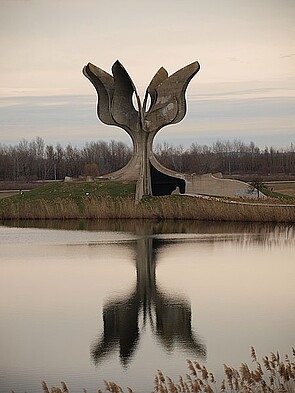
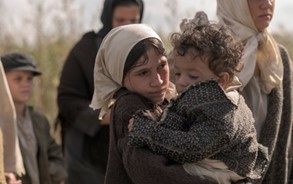
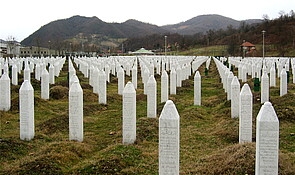
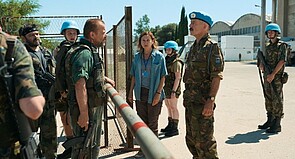
The official trailer of the movie Dara of Jasenovac (Serbia, 2020)
The official trailer of the movie Quo vadis, Aida? (Bosnia-Herzegovina, 2020)
Katarina Ristić · 31.07.2020
The Nobel Prize Award Sparks a Memory War: The Recent Handke Debate
Read more
Srđan Milošević · 30.10.2017
Twice Before the Court: The Judicial Rehabilitation of General Dragoljub Mihailović
Read more
Isabela Kisic · 12.09.2017
‘Lex CEU’, Anti-Soros Campaigns and the State of Civil Society in Serbia
Read more
Rena Jeremić Rädle · 25.10.2015
Remembrance in Transition: The Sajmište Concentration Camp in the Official Politics of Memory of Yug...
Read more
Ivana Dobrivojević · 23.10.2013
From the Beginning to the End 1918 – 1991. Exhibition in the Museum of Yugoslav History
Read more
Get this article as PDF download (including pictures).